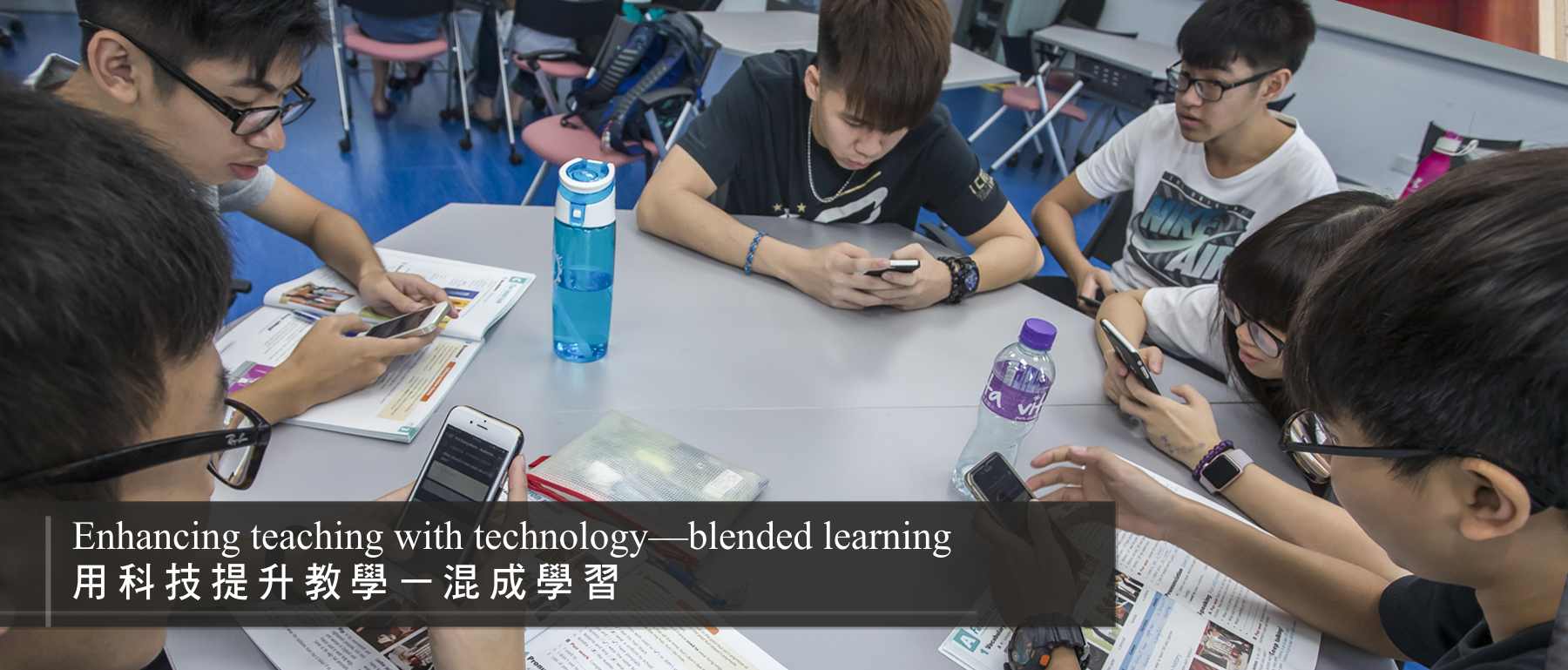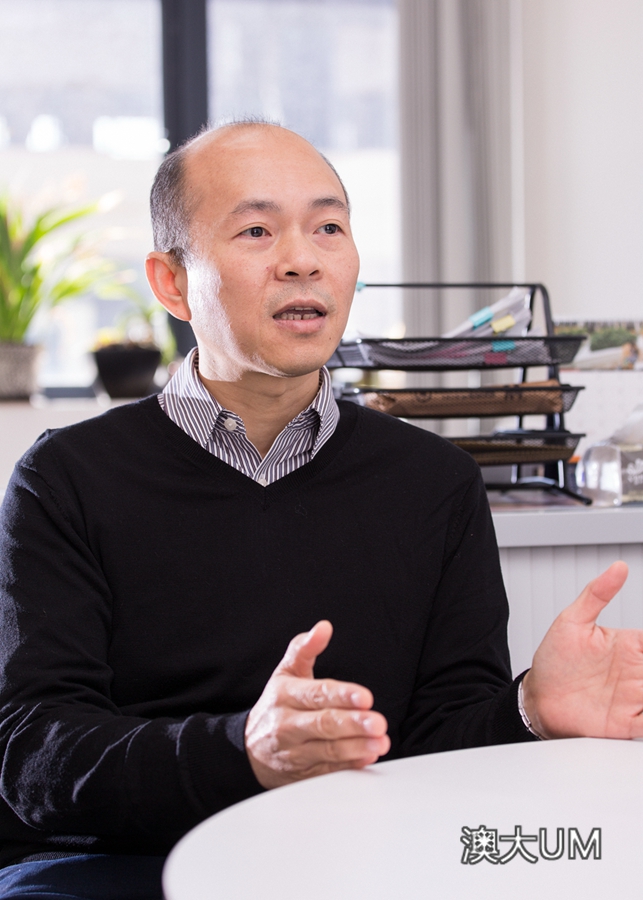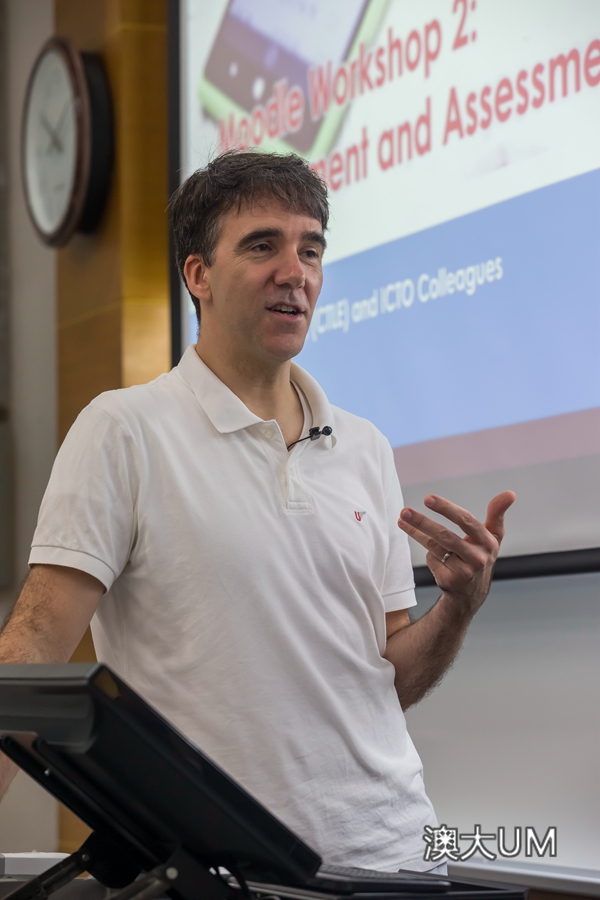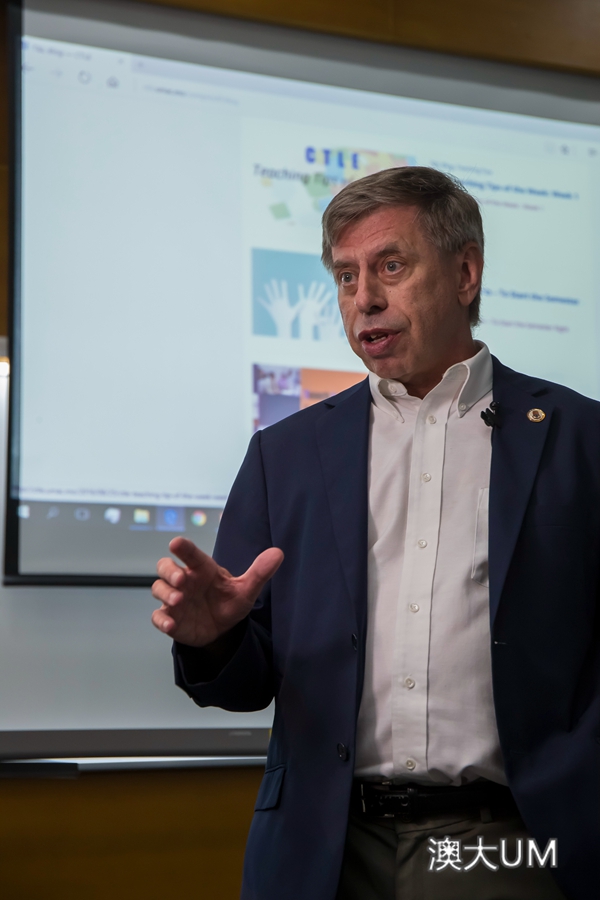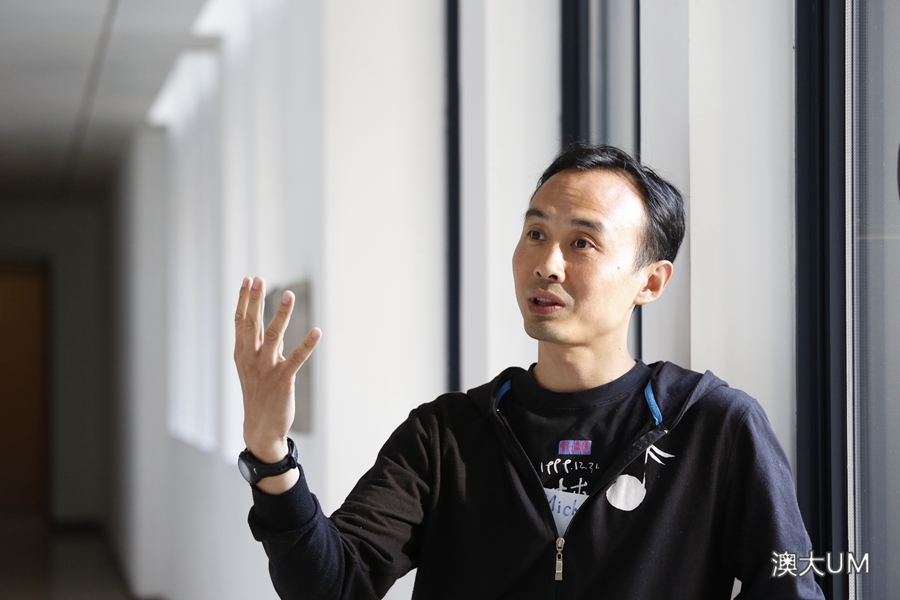Source: umagazine
In recent years, educational technologies have proliferated and they are designed to make learning a wholesome experience for students. We hear a lot about blended learning today. But what is blended learning? How may educational content delivered through digital media or online modes better engage students?
Instead of following a lecture word-by-word or slide-by-slide, students enrolled in the course ‘Compiler Construction’ can simply click a button to express their opinions and ideas freely, publicly, and anonymously, via the use of mobile technology or e-learning tools such as Poll Everywhere and Clickers. ‘It has become compulsory for us, the instructors as well as the students, to see in real time how other students respond,’ says Assistant Professor Derek Wong Fai from the UM Faculty of Science and Technology, who was among the first to incorporate e-learning into teaching. ‘It helps to create an enjoyable, safe and comfortable classroom atmosphere. Engagement is high.’
A Novel Way of Learning
‘The e-learning tools help us walk through a lesson step by step and enhance interaction in class,’ says Hou Rui, a fourth-year student from the department of computer and information science, after attending a lecture about compiler construction. In his experience, the approach of e-learning innovations varies from course to course. Most instructors use UMMoodle, while a few use Clickers or Poll Everywhere. ‘It is very convenient for us [students] to review the slides and maintain an appropriate learning pace when Clickers are used,’ he says.
Hou can access his class with a click and receive feedback instantly. He also has the opportunity to connect with a wider group of learners that helps him to maximise his learning outcomes. ‘The system of learning knowledge through e-learning innovations is less monotonous than just sitting there listening to lectures and reading thick textbooks on my own. I do hope more courses at UM will be conducted via various e-learning technologies,’ he says.
Making Class Participation Less Intimidating
Applying e-learning in the classroom is not only considered an add-on; it is also an integral part of the educational process. Students may be asked to take some quick surprise quizzes in class on their smart phones. The quizzes are mostly in the form of multiple-choice questions. Students’ answers are directly connected to e-learning devices, which help generate the quiz results. By doing so, the instructor can analyse how mistakes are made and immediately explain what has gone wrong.
Beginning a class with an anonymous poll conducted by the instructor is perhaps an ideal way to engage students and create a positive learning atmosphere. Dr Wong finds that this strategy can help to improve class participation. ‘Clicker or Poll Everywhere is an effective web-based tool that allows one to collect feedback and responses from the students. It helps facilitate the teaching process by flipping my classroom to actively engage my students so they can study in a collaborative and fun way,’ says Dr Wong. ‘These e-learning tools can be used for quizzing, brainstorming, informal feedback, and other applications. They enable full integration with PowerPoint and a variety of quizzes and polls are available.’
An Unprecedented Learning Approach
Whether it is used as an auxiliary or main tool, e-learning has proven to be an effective tactic. Prof Spencer Benson, director of UM’s Centre for Teaching and Learning Enhancement (CTLE), defines blended learning as the integration of face-to-face teaching and learning with online teaching and learning through the use of digital media, such as text, audio, and video.
‘The integration of these two approaches allows for synergy and broadening of the teaching and learning within a course, the ability to accommodate a wider range of student learning styles and needs, and more importantly deeper learning,’ says Prof Benson.
‘Some students and faculty may no longer carry pens and paper because the smartphone allows one many different ways to take photos, notes, and communicate,’ says Christopher Fulton, an e-learning technology officer. ‘Personally, I believe the smartphone is the pen and paper, and the preferred note-taking and recording device, of this generation.’ What Fulton found through his observation in a recent class, where students were given the option to take a short formative quiz either on paper or on their phone, was that students were more interested in taking a quiz on their phone. ‘It might have been that the online quiz was novel, gave students instant feedback, or some other reason – like it wasn’t for marks – but clearly there was enthusiasm in that class for learning with technology,’ says Fulton.
At UM, Moodle, Mahara, Turnitin, and Poll Everywhere are the main e-learning technologies available to all faculty members and students. They are supported by technicians from the Information and Communication Technology Office, CTLE, and the library. As Fulton observes, many teaching staff are making good use of many popular applications and digital tools to enhance their teaching quality.
Entertaining E-learning at Residential Colleges
Teaching staff in the residential colleges are always encouraged to use online resources to facilitate and document the academic progress of the students. Many Resident Fellows (RFs) and Resident Tutors (RTs) find that incorporating an online component into their instructions not only motivates students, but also helps increase their learning retention. For instance, the Self-Access Learning Commons (SAC) in the Moon Chun Memorial College (MCMC) offers a diverse range of opportunities for students to enhance their knowledge of the English language with many up-to-date interactive audio and visual activities and applications installed on the computers.
‘The SAC has become popular among students because it not only provides learning in an entertaining format, but also encompasses independent online learning. Immediate assessment and feedback for each activity completed will indicate to students how much they have learned, or may need to improve. The absence of the classroom teacher means that students are less pressured. In light of this, assessment here will not be attributed, or even affect their overall course final grade. Therefore, students won’t feel pressured to perform,’ says Prof Manuel Noronha, associate master and chief of students of the MCMC. ‘If you are not sure which your level is, just give it a try. There is a level indicator in the applications, so you can do the self-assessment and begin with your suggested level.’
These online English learning recourses include writing labs, reading and grammar guides, listening and pronunciation activities, interactive tests and quizzes (from beginners to advanced levels), business English, and e-portfolio and reflective writing tutorials. ‘These independent study sessions can complement their English core courses as a considerable amount of learning continues beyond the classrooms. You can just walk in and try these online exercises any time you want, and you will know the result instantly and what areas you need to improve’, says Prof Noronha. ‘We will announce to the students when there are any updates, or new applications via WeChat. If they come and join in, it means they take the initiative to learn independently.’
The college plans to create more diversity with the SAC, by extending this e-learning system to facilitate the learning of the Portuguese language. ‘We have quite a few students majoring in Portuguese, says Prof Noronha. ‘Last semester, we invited various professors from the Department of Portuguese to give talks at our Portuguese Corner. They were free to choose any topic they liked. Many students came to the events. So there is demand in this respect. We’ll study the possibility of launching this system.’
Worth the Time and Effort
Today the job of a teacher is more complicated than it has ever been. Many might have a preconceived notion that e-learning tools can reduce teachers’ workload. But in Dr Wong’s eyes, the opposite is true. ‘It takes a lot of skills, time and effort to encourage class preparation. First, you have to study the e-learning programmes. Then you need to familiarise yourself with its operations, and redesign your course accordingly. You have to revisit each point and see how to connect the different points coherently,’ he says.
However, Dr Wong still believes that the advantages of blended learning outweigh the disadvantages. ‘Blended learning not only improves classroom interactions, but also facilitates their independent learning. Perhaps it causes an increased workload, but it is worth it. In the global tertiary education landscape, it is an irreversible trend,’ he says.
International Recognition
Dr Michael Li Zihao, an assistant professor from the Faculty of Education (FED), has received the Silver Award from the International Outstanding e-Learning Awards. The Gold Award went to Prof Malik Hussain from Harvard University’s Graduate School of Education. Organised by the University of Hong Kong’s e-Learning Development Laboratory, the award recognises innovations in e-learning pedagogy through best practice sharing and building a community of practice among international schools and universities who are proactive in e-learning development.
Dr Li’s early adoption of technology for engaging and motivating students and enhancing learning serves as a model for many at UM. His flipped classroom approach and learner-centred, outcome-based educational model help students to take responsibility for their own learning. Students from his drama class are taught to brainstorm and co-write scripts with Google software, and to document their learning process through filming short videos with their mobile applications. In his dance class, Dr Li encourages his students to visit different places in Macao and to produce films with multimedia in order to record and comprehend local human geography by body language. ‘Educators of the new era ought to take advantage of the opportunities that come with the advancement of technology and change the conventional ways we teach,’ he says.
Opening New Doors
Starting in 2015, a select group of UM assistant and associate professors representing each of the academic units agreed to redesign one of their courses and integrate the blended learning approach. ‘The effective use of technologies to enhance teaching and learning at UM lags behind that of peer institutions in Hong Kong, Asia and Western institutions,’ says Prof Benson. ‘The Blended Learning Project is the first step in helping to bridge the gap in our use of technologies to enhance teaching and learning compared to international standards.’
The project sets the stage for the development of models of technology to enhance teaching and learning that can be adapted throughout the university, including the development of online courses, applications, and Massive Open Online Courses (MOOCs). ‘To date, several courses of the project have been redesigned and various pedagogical approaches have been piloted or are being tested. All of the project members are actively testing out approaches and ideas for new models of how learner-centred teaching and learning can occur at UM,’ Prof Benson says.

